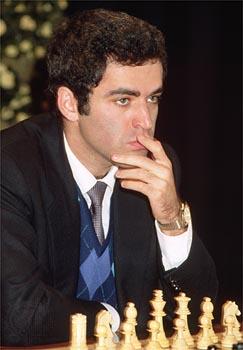
The Best Moves Never Played - Tactics Part 3
Defensive methods have improved drastically in modern chess. It is really rare for one to see clean combinations, where one side finishes off the game without the other side putting up tough resistance. Top players over time have accumulated numerous defensive techniques and methods. One of these defensive techniques is marching the king throughout the entire board in a search for a safe place. This defensive method should be in the arsenal of chess tools of every chess player and in this article we will look at a few recent examples featuring this technique. Usually when the attacking side has given up material the defensive side just needs to quench the attack and trade into in a winning endgame. Getting the king to safety will ensure that the attack winds down.
In the first example shown below, masterly annotated by Karjakin, black is facing a checkmating attack. The rook on a7 and the pawn on a4 keep an eye on the queenside, while the rook, queen and the bishop threaten the kingside. Black cannot block the 7th-rank with Rd7 or Re7 and to make matters worse his knight is pinned on e6. White's main idea is to play Qf7-c7 checkmate since the c7-square is not defended (the e6-knight is pinned). Moreover, there is material equality on the board. Black's only trump is the passed d-pawn which in the endgame can become a major force. Qf7 Kc5 looks very strong for white but there is a way not to allow Kc5. The reason is that black does not have any threats and cannot prevent Qf7 anyways, which means that white can spend an extra move on preventive measures.
I really enjoyed Karjakin's commentary, specifically his evaluations of the king's position if the game ever went into the endgame. Karjakin mentions Grischuk's game in the comments that features a similar idea. Let us take a look at that game too! The first example and the next one are highly complex and take tons of time to decipher, thus one should not be discouraged if some variations are hard to follow.
Unlike the first example, here white is down material. Also white's king is in the middle of the board too, black does not enough developed pieces to checkmate it. Grischuk would like to move the king away from the d-file, so that the rook on d1 will not terrorize it. The king march to b8 or a7 will put an end to white's attack and leave black with an extra piece. How should white prevent it? White found a way similar to Karjakin's game but here it was not as effective. Why? This was because white had an exposed king.
In this game Ftacnik mentions the famous Kasparov - Topalov game from 1999, which has become a modern classic. Let us refresh our memory and see how Kasparov, one of the greatest attackers of all time handled the king chase in that game. After the initial few moves white was down a rook and a piece! - A very large material deficiency. However, black's king is in more danger than in the two examples above. When the king got to a4 it had no squares to retreat to and white needed only one check to win the game.
Kasparov managed to find almost all of the best moves, which is quite impressive. Like in the first two examples it was really easy to misstep and a few imprecise moves would result in the opponent's king getting away. Overall, these examples show the complexity of the arising positions and it's important to realize that only precise calculations and excellent tactical vision can guide a player through these complications.
Next week we will continue with tactics in contemporary play.






